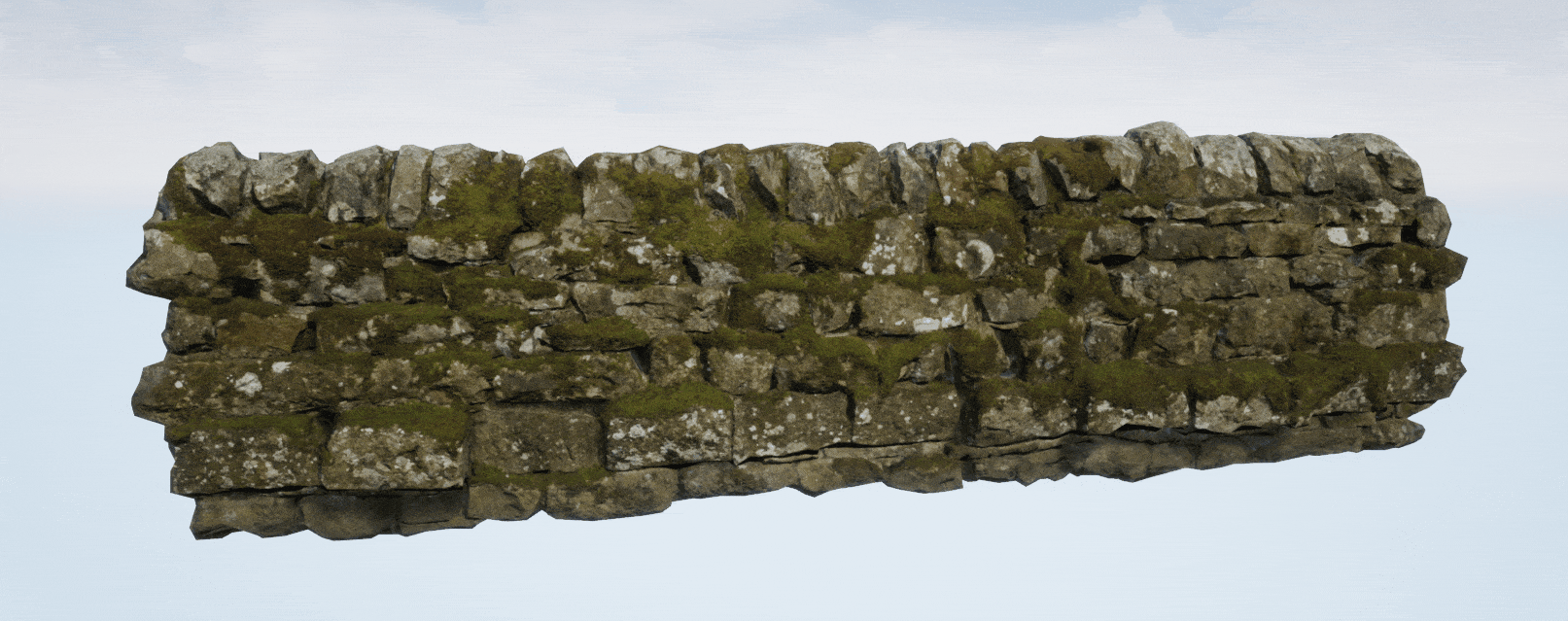Updated Megascans plugin for Unreal Engine brings new Vertex Blend Material
Over the past few months, we have been working to improve the Megascans plugin for Unreal Engine so it best leverages the engine’s latest features while also using Megascans more efficiently. With that in mind, we’ve completely overhauled most of our materials, introduced the new Vertex Blend material, and squashed many bugs along the way. This latest update is applicable to versions 4.23, 4.24, and 4.25 of Unreal Engine.
New vertex blend material
This update comes with an overhauled blend material that offers much tighter control over each layer and vastly improves blend quality, owing to heightmap blending, all while maintaining stable performance. The material is clean, well-organized, and can be reused depending on your project’s needs.
By allowing you to apply multiple texture sets to a single asset, blend materials have a myriad of uses. Vertex blending is most commonly used to add detail and variety to large surfaces such as walls and other static meshes where repetitive tiling is unwanted.
Setting up this material, however, can often be complicated and time-consuming. That’s where the Quixel Bridge plugin for Unreal Engine comes in. Here is Josh Powers demonstrating how easy this can be:
Each layer in the material has toggle-able parameters for more advanced features such as minimum and maximum settings for roughness, specular from albedo, and more. In addition, every layer contains a base set of parameters, should they be needed, such as tiling, rotation, offset, and normal map strength.
Between the new height blending technique, and the numerous settings accessible to you, the new Vertex Blend material is a great way to rapidly bring your scene to life.
We’ve also added a wet/puddle layer that is blended on top of each layer. The wet/puddle layer comes with many controls, such as opacity, water normals, tint, and darkening falloff to tint the underlying layers. To illustrate this, here are some examples:
Foliage shader and LOD distances
Up until now, 3D plants exported via the plugin used Unreal Engine’s ‘Auto Compute LOD Distances’ feature for LOD switching, and this produced visible LOD popping. With this update, the plugin now uses custom LOD distances, specified in the metadata of Megascans 3D plants, to reduce LOD popping and deliver far more realistic results.
We have also updated the foliage shader to include a new camera-facing billboard material. These billboards for each asset also automatically adjust with the movements of the camera.
Fuzz material
An all-new fuzz material will help you make the most out of our mossy assets. The Megascans library has a plethora of moss-covered scans that all come with fuzz maps which you can now make use of with a single click.
Here’s an example showing the fuzz material in action. When you turn fuzz on it brings the moss on the asset to life.

We are continuously working to add new features to the Megascans plugin for Unreal Engine together with feedback from our community. We look forward to hearing from you here.
For existing users of Quixel Bridge, this update will be available to you in-app. If you’re new to Bridge, download it today, for free.



